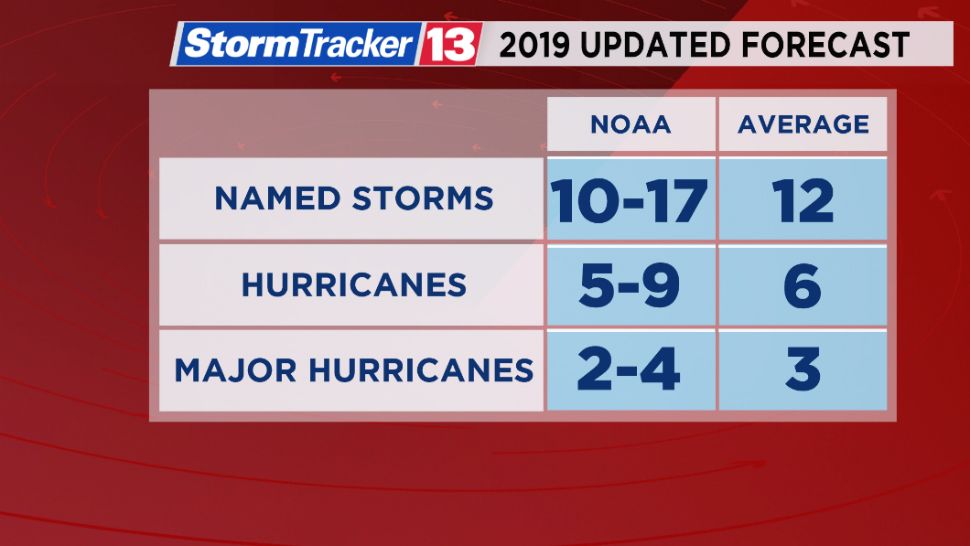ORLANDO, Fla. — The chances of an above-average season Atlantic hurricane season have increased, according to an updated forecast from the NOAA.
- NOAA updates prediction on number of named storms
- New forecast bumps numbers of named storms, hurricanes
- PREVIOUSLY: NOAA: Up to 15 Named Storms Predicted for Hurricane Season
- RELATED: How Forecasters Come Up With Hurricane Predictions
- STORM SEASON 2019: Tropical Maps | Latest News, Resources | Supply Checklist
The new forecast by the National Oceanic and Atmospheric Administration increases the numbers of named storms, hurricanes, and major hurricanes in the Atlantic from the May forecast.
NOAA is now forecasting
- 10 to 17 named storms
- 5 to 9 hurricanes
- 2 to 4 major hurricanes
These numbers include the two named storms that have already occurred, Andrea and Barry.
The NOAA's preseason forecast predicted nine to 15 named storms, 4 to 8 hurricanes and 2 to 4 major hurricanes. An average season has 12 named storms, 6 hurricanes and 3 major hurricanes.
The government is basing the increased numbers on the end of El Nino conditions in the Pacific.
El Nino has a tendency to reduce the number of systems in the Atlantic. With El Nino now over, the Pacific will likely enter a "neutral condition." This neutral condition historically increases the number of storms and hurricanes in the Atlantic.
The NOAA is also pointing to climatology: The Atlantic has been in a “high-activity era” that began in 1995, and those conditions will likely continue.
There is no named storm in the Atlantic at this time, and the tropics will remain very quiet over the next three to five days.
Despite the fairly calm season so far, activity may increase quickly as we move into late summer and fall.
Atlantic hurricane season runs through November 30.



